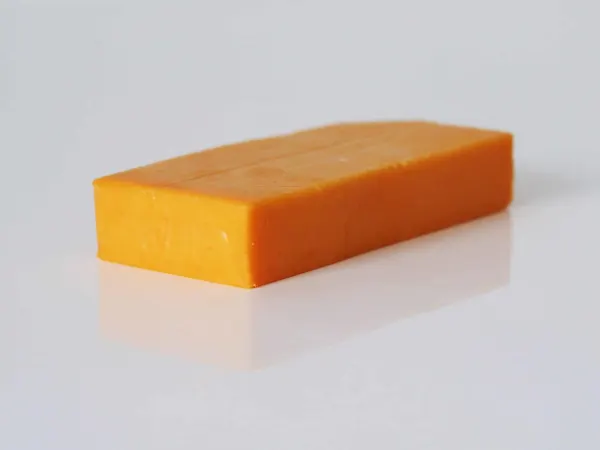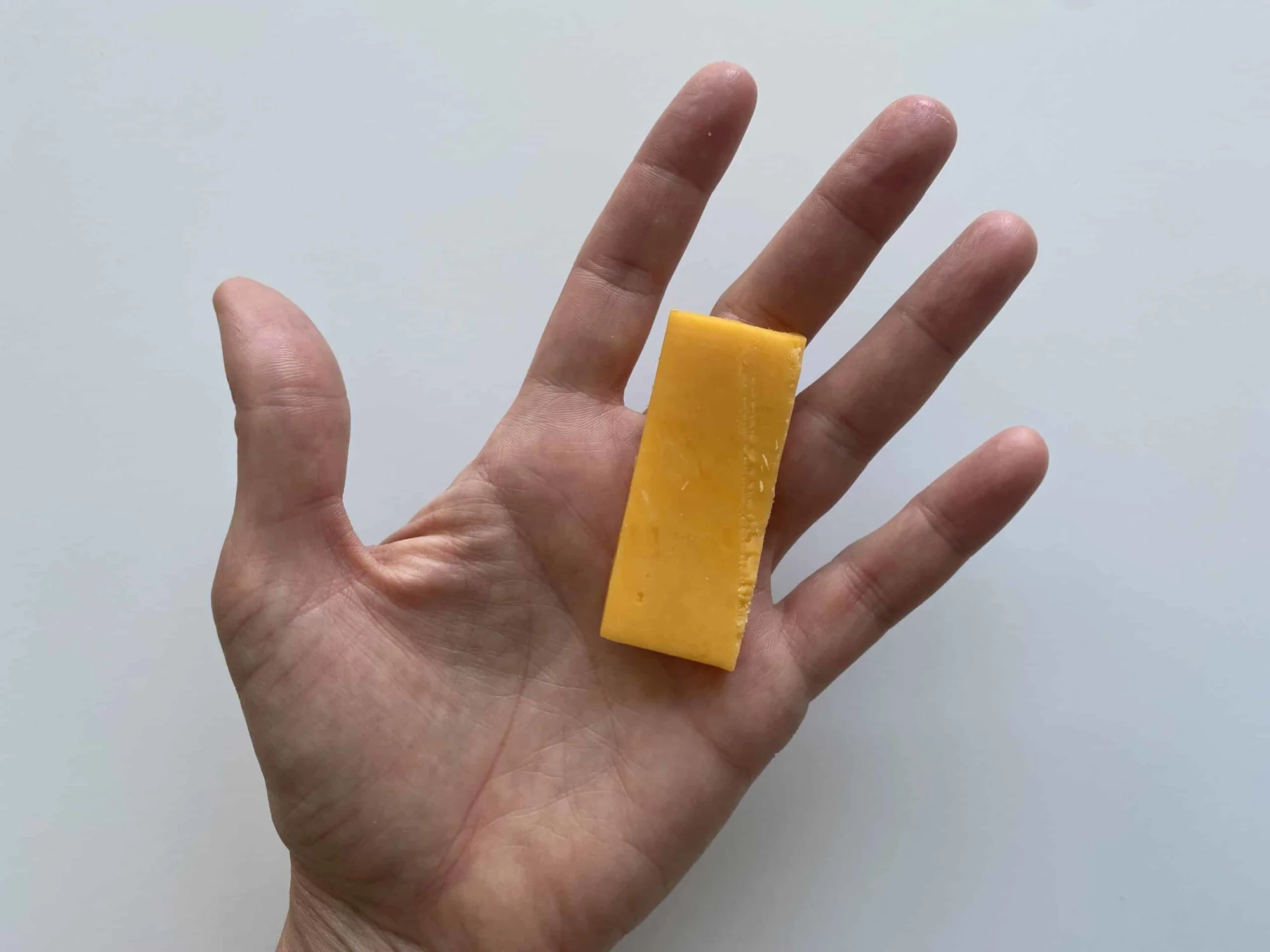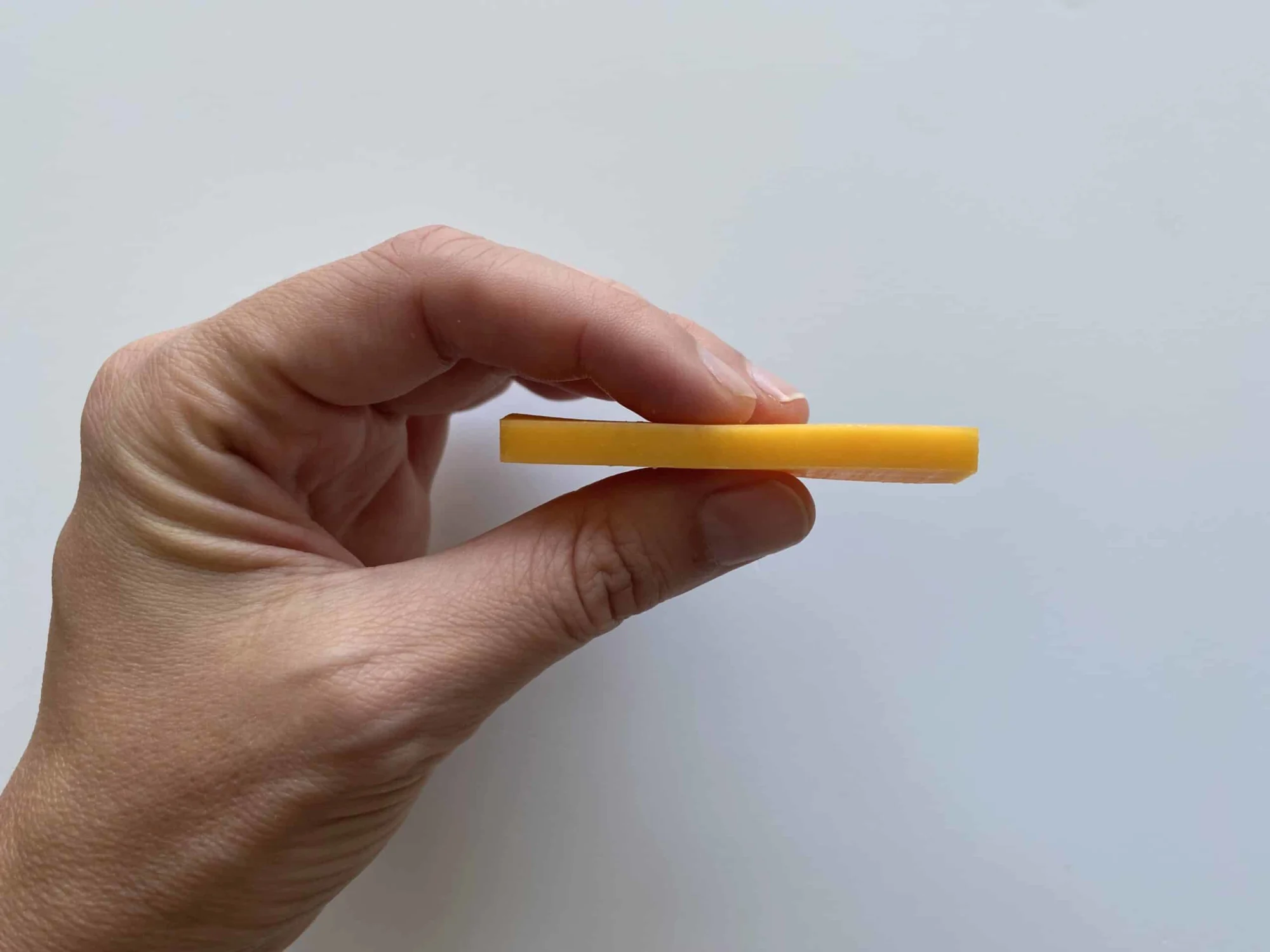Colby Cheese
Dairy
Age Suggestion
6 months
Iron-Rich
No
Common Allergen
Yes

When can babies have colby cheese?
Colby cheese may be introduced as soon as baby is ready to start solids, which is generally around 6 months of age. While colby cheese can be high in sodium, a taste here and there as part of a varied diet is not a cause for concern. When shopping, choose pasteurized colby to minimize the risk of foodborne illness.
Mild and sweet with a buttery flavor and striking orange color, colby cheese gets its name from the town in Wisconsin where it was first made. Joseph Steinwand, a teenager in the 1880s, experimented in his father’s cheese factory, ultimately creating a cheese similar in some ways to cheddar, but mellower in flavor and softer and springier in texture. That mild sweetness is achieved by washing the curds with fresh, cold water before draining and pressing, often into a cylindrical form called a longhorn.
Learn more about choosing cheese to share with babies.
What are the benefits of sharing colby cheese with baby?
Colby cheese is rich in protein, fat, calcium, selenium, zinc, and vitamins A and B12. Together, these nutrients work together to provide the building blocks for growth, development, and brain function. They also help support bone density, taste perception, vision, energy, and immunity. When shopping, choose pasteurized colby cheese to minimize the risk of foodborne illness.
While colby cheese can be high in sodium, the amount of sodium that babies eat tends to be low as they learn the skills to feed themselves, and some sodium is important for supporting baby’s electrolyte balance, hydration, and movement. While many health organizations recommend holding or reducing salt in food shared with baby, recent reviews of literature suggest that this may not be necessary. Furthermore, sharing family meals, even if they contain salt, has its benefits: baby has opportunities to explore a wider variety of food, share their family food culture, and practice eating a variety of textures.
Is colby cheese a common allergen?
Yes. Colby cheese is often made from cow’s milk, which is classified as a Global Priority Allergen by the World Health Organization. It is an especially common food allergen in young children, accounting for about one-fifth of all childhood food allergies. Keep in mind that dairy products from other ruminants such as sheep, goat, and buffalo may provoke similar allergic reactions to cow’s milk dairy products. That said, there’s good news: milk allergy often disappears with time. Research shows that the majority of children with cow's milk allergy will outgrow it by age 6, and many babies with milder symptoms of milk protein allergy (which can show up as painless blood in stool) are able to successfully reintroduce cow's milk as early as their first birthday, with the guidance of their appropriate pediatric health professionals. Note: Aged cheeses generally contain histamines, which may cause rashes in children who are sensitive to them.
Note: Colby cheese commonly contains annatto, a seed also known as achiote, that is used to add flavor and bright orange color to foods. While annatto is not a common allergen, reports of allergic reactions have been documented and have been reported to be severe.
Milk is a common cause of food protein-induced enterocolitis syndrome, also known as FPIES. FPIES is a delayed allergy to food protein which causes the sudden onset of repetitive vomiting and diarrhea to begin a few hours after ingestion. This is termed acute FPIES. Left untreated, the reaction can result in significant dehydration. When milk is in the diet regularly, FPIES can present as reflux, weight loss, and failure to thrive - this is termed chronic FPIES. Symptoms generally improve with elimination of milk from the baby’s diet. Thankfully, like other forms of milk allergy, FPIES which presents early in life is generally outgrown by the time a child has reached 3-5 years of age.
Lactose intolerance, which is when the body has a hard time processing lactose, the sugar that is naturally present in milk, can sometimes be mistaken for an allergy, as it can result in bloating, gas, diarrhea, nausea, and other discomfort. For those with older children who are lactose intolerant (keep in mind this is uncommon for infants and toddlers), some good news: compared with milk and certain other dairy products, many cheeses may be better tolerated by those with lactose intolerance, particularly aged cheeses, which have lower lactose content. Be sure to connect with an appropriate pediatric health care professional for any questions about lactose intolerance, and know there are many lactose-free dairy foods available.
If you suspect baby may be allergic to milk, consult an allergist before introducing dairy products like cheese. Based on a baby’s risk factors and history, your allergist may recommend allergy testing, or may instead advise dairy introduction under medical supervision in the office. If the risk is low, you may be advised to go ahead and introduce cheese in the home setting. As with all common allergens, start by serving a small quantity on its own for the first few servings, and if there is no adverse reaction, gradually increase the quantity over future meals. If you have already introduced milk and ruled out an allergy, pasteurized cheeses can be introduced as desired, without any need to start small and build up over time.
Is colby cheese a choking hazard for babies?
Yes. Cheeses like colby are firm and can get globby and hard to manage in the mouth, qualities that increase the risk of choking. To reduce the risk, prepare and serve colby cheese in an age-appropriate way. As always, make sure you create a safe eating environment and stay within an arm’s reach of baby during meals. For more information on choking, visit our section on gagging and choking and familiarize yourself with the list of common choking hazards.
Videos
When can babies and toddlers have colby cheese sticks?
When a child has demonstrated the consistent ability to bite and tear with their teeth and then engage in chewing (no swallowing bites whole), they are likely safe to eat colby cheese sticks that have been cut in half lengthwise, while seated with supervision. For many toddlers, this happens after the first birthday, but every child is different. Colby cheese sticks and other squared-off cheese sticks, when cut in half lengthwise, are a manageable shape for many children by around 18 months of age. That said, any type of cheese stick is still considered a higher choking risk. Never let a toddler eat cheese sticks while walking around, as this heightens the risk of choking.
How do you serve colby cheese to babies?
Every baby develops on their own timeline, and the suggestions on how to cut or prepare particular foods are generalizations for a broad audience.
6 months old +:
Feel free to share tastes of pasteurized colby cheese here and there with baby as part of a varied diet. If sharing colby cheese at this age, offer long, flat slices to reduce choking risk and make it easier for baby to self-feed. If you want to use colby cheese in melted form, opt for shredded colby and sprinkle sparingly, as large globs of melted cheese can be difficult for young babies to chew and manage in the mouth. Avoid offering any kind of cheese in cubes and large chunks.
9 months old +:
Feel free to share tastes of pasteurized colby cheese here and there with baby as part of a varied diet. Cut pasteurized colby into long, flat slices or bite-sized pieces torn from a flat slice. Alternatively, grate the cheese and serve the cheese on its own or folded into meals. Continue to avoid serving cheese in cube shapes or large melted globs, as these pose a high choking risk.
12 months old +:
Serve bite-sized pieces of pasteurized colby cut from a thin slice, shredded colby, or long flat slices for biting and tearing practice. At this age, you can also melt the cheese in a thin layer over bread, tortillas, pasta, beans, or vegetables. Just make sure the cheese isn’t too hot, but also hasn’t cooled so much that it re-hardens or gets clumpy.


Written by
Expert Tips Delivered to Your Inbox
Sign up for weekly tips, recipes and more!
The content offered on SolidStarts.com is for informational purposes only. Solidstarts is not engaged in rendering professional advice, whether medical or otherwise, to individual users or their children or families. No content on this site, regardless of date, should ever be used as a substitute for direct medical advice from your doctor or your medical or health professional, nutritionist, or expert in pediatric feeding and eating. By accessing the content on SolidStarts.com, you acknowledge and agree that you are accepting the responsibility for your child’s health and well-being. In return for providing you with an array of content “baby-led weaning” information, you waive any claims that you or your child may have as a result of utilizing the content on SolidStarts.com.







